By John Treadwell Dunbar ——Bio and Archives--January 26, 2011
Travel | CFP Comments | Reader Friendly | Subscribe | Email Us
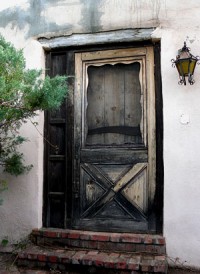 Lincoln has been heralded as the best preserved cow town in the American West. Sadly for many of its earlier inhabitants, it also became the epicenter of the notorious, blood-splattered Lincoln County War that waged off and on through 1878. It was a war which claimed the lives of 22 men, wounded nine others and vaulted Billy the Kid to the pinnacle of outlaw fame whether he deserved it or not.
If you seek drama and the noisy struggle of life over death in a political and legal environment essentially corrupt to its core, this tale is for you, and it's fact, at least those aspects agreed upon.
There's no need to embellish or feed into any number of myths that have evolved over the years.
Lincoln has been heralded as the best preserved cow town in the American West. Sadly for many of its earlier inhabitants, it also became the epicenter of the notorious, blood-splattered Lincoln County War that waged off and on through 1878. It was a war which claimed the lives of 22 men, wounded nine others and vaulted Billy the Kid to the pinnacle of outlaw fame whether he deserved it or not.
If you seek drama and the noisy struggle of life over death in a political and legal environment essentially corrupt to its core, this tale is for you, and it's fact, at least those aspects agreed upon.
There's no need to embellish or feed into any number of myths that have evolved over the years.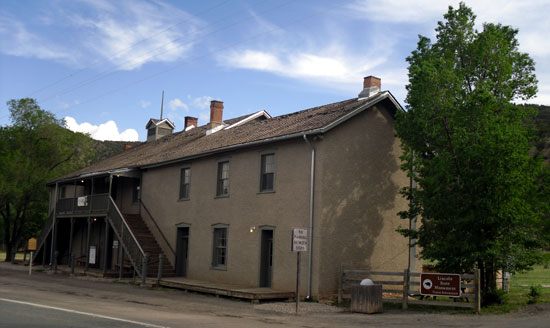 The real story stars a cast of deadbeat cowboy ruffians, renegade rustlers, cold-blooded killers, dishonest lawmen, greedy land barons and shifty entrepreneurs. Lincoln County - the entire territory for that matter - was awash with mafioso-types and cheap politicians on the take. Adding to the political dysfunction was Governor Samuel Axtell, as corrupt, inept and devious a politician as they come. You've got your lyin', your cheatin', some double-crossin' and backstabbin', plenty of cussin' and threatenin', and lots of shootin'. And beneath it all the unchecked cauldron of revenge that courses unimpeded throughout the telling.
In hindsight, great stuff, unless you were one of the unfortunates plugged full of hot lead, writhing on the ground with your guts spilled out on the dusty streets of little Lincoln, originally called Las Placitas del Rio Bonito by the Spanish who settled Bonito Valley in the 1850s. Back in Billy's day the population numbered around 800. Today, the hamlet lies scattered among green pastures and orchards and shade trees nestled between dirty brown hills 60 miles west of Roswell in southcentral New Mexico and sustains a tiny population of diehards catering to tourists from afar.
The real story stars a cast of deadbeat cowboy ruffians, renegade rustlers, cold-blooded killers, dishonest lawmen, greedy land barons and shifty entrepreneurs. Lincoln County - the entire territory for that matter - was awash with mafioso-types and cheap politicians on the take. Adding to the political dysfunction was Governor Samuel Axtell, as corrupt, inept and devious a politician as they come. You've got your lyin', your cheatin', some double-crossin' and backstabbin', plenty of cussin' and threatenin', and lots of shootin'. And beneath it all the unchecked cauldron of revenge that courses unimpeded throughout the telling.
In hindsight, great stuff, unless you were one of the unfortunates plugged full of hot lead, writhing on the ground with your guts spilled out on the dusty streets of little Lincoln, originally called Las Placitas del Rio Bonito by the Spanish who settled Bonito Valley in the 1850s. Back in Billy's day the population numbered around 800. Today, the hamlet lies scattered among green pastures and orchards and shade trees nestled between dirty brown hills 60 miles west of Roswell in southcentral New Mexico and sustains a tiny population of diehards catering to tourists from afar.
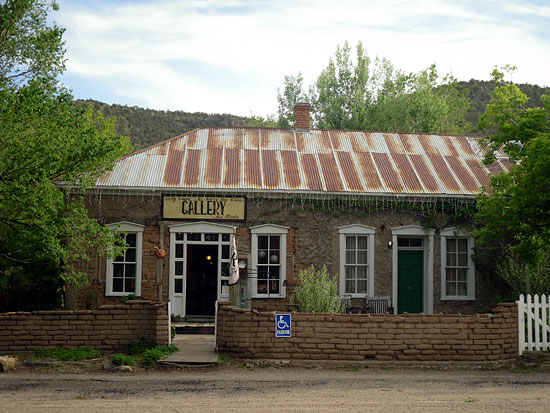 Except for the asphalt strip that runs through town, Lincoln is stuck in the late 19th century. It's no wonder this quaint village is a designated National Historic Landmark, much of it a State Historic Monument with 17 recognized structures, many built in the adobe "Territorial" style popular in the American Southwest of the 1870-1880s.
Throw out Hollywood's idea of Lincoln, those stereotypical images of orderly boardwalks and platted streets buffeted by painted facades and square corners on wooden two-story buildings. When you first drive through today's Lincoln down Route 380 you'll see low-slung adobe walls and crumbling stone footings. You can't miss hulking Torreon Tower used defensively by early settlers to ward off marauding Apaches, and later by some of the Dolan boys in their final standoff with Billy and a few of the Regulators.
With the exception of a two-story courthouse from which Billy made his daring escape after the war, killing two deputies in the process, the town's original architecture is subdued. As 130-year-old buildings go, preservation has been remarkable. Still standing are John Tunstall's store with turn-of-the century merchandise on display, and bad guy James Dolan's small nondescript home also remains. The venerable Ellis store, squat and sprawling behind a large front yard, has been converted to a delightful restaurant and country inn. And corrupt Sheriff George Peppin's crumbling, dark-pink adobe home is parked out in the weeds as you enter the village from the west.
Except for the asphalt strip that runs through town, Lincoln is stuck in the late 19th century. It's no wonder this quaint village is a designated National Historic Landmark, much of it a State Historic Monument with 17 recognized structures, many built in the adobe "Territorial" style popular in the American Southwest of the 1870-1880s.
Throw out Hollywood's idea of Lincoln, those stereotypical images of orderly boardwalks and platted streets buffeted by painted facades and square corners on wooden two-story buildings. When you first drive through today's Lincoln down Route 380 you'll see low-slung adobe walls and crumbling stone footings. You can't miss hulking Torreon Tower used defensively by early settlers to ward off marauding Apaches, and later by some of the Dolan boys in their final standoff with Billy and a few of the Regulators.
With the exception of a two-story courthouse from which Billy made his daring escape after the war, killing two deputies in the process, the town's original architecture is subdued. As 130-year-old buildings go, preservation has been remarkable. Still standing are John Tunstall's store with turn-of-the century merchandise on display, and bad guy James Dolan's small nondescript home also remains. The venerable Ellis store, squat and sprawling behind a large front yard, has been converted to a delightful restaurant and country inn. And corrupt Sheriff George Peppin's crumbling, dark-pink adobe home is parked out in the weeds as you enter the village from the west.
 The Wortley Hotel across from the courthouse still serves grub and offers lodging. It's the same hotel where deputy Robert Ollinger, a thug of a man, was enjoying a meal when shots from the courthouse brought him running across the street into both barrels of Billy's shotgun as the Kid was making one of his many escapes. Several other original structures remain, and places of note like the cemetery and the plot behind Tunstall's store where Tunstall and McSween are buried. The orchard, and the site where the drunkard Colonel Nathan Dudley and his cavalry troops set up camp during that fateful siege of McSween's home in July of 1878 that ended the Lincoln County War are still identifiable.
The Wortley Hotel across from the courthouse still serves grub and offers lodging. It's the same hotel where deputy Robert Ollinger, a thug of a man, was enjoying a meal when shots from the courthouse brought him running across the street into both barrels of Billy's shotgun as the Kid was making one of his many escapes. Several other original structures remain, and places of note like the cemetery and the plot behind Tunstall's store where Tunstall and McSween are buried. The orchard, and the site where the drunkard Colonel Nathan Dudley and his cavalry troops set up camp during that fateful siege of McSween's home in July of 1878 that ended the Lincoln County War are still identifiable.
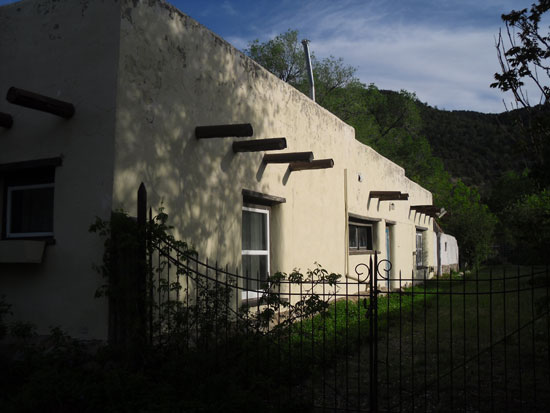 A trip to Lincoln is incomplete without visiting the courthouse and museum. You can see firsthand where Billy, who was scheduled to hang, was kept under guard as he planned his escape, the window from where he blasted deputy Ollinger into the netherworld and the upstairs porch from where he addressed some of the townsfolk before taking flight. The museum displays Billy's purported chaps, pistol and rifle. And a grainy black and white photo of his gang of Regulars to which he belonged might even be authentic.
There are original bullet holes on display, and with a little imagination and some historical context you can almost see the blood-fest unfold, feel the tension boil in an insane tit for tat, back-and-forth shootout and outright executions that stretched from the Fritz Ranch to Blazer's Mill, on out to open range and hill country and scrub land.
The Lincoln County War came to an end in the heart of town after a five-day siege of McSween's home, gunfire blazing amid the orange glow of dry timbers crackling while its owner, a married young lawyer whose first name was Alexander, lay dead among the dead and his comrade-in-arms Billy the Kid ran for his life into the night.
A trip to Lincoln is incomplete without visiting the courthouse and museum. You can see firsthand where Billy, who was scheduled to hang, was kept under guard as he planned his escape, the window from where he blasted deputy Ollinger into the netherworld and the upstairs porch from where he addressed some of the townsfolk before taking flight. The museum displays Billy's purported chaps, pistol and rifle. And a grainy black and white photo of his gang of Regulars to which he belonged might even be authentic.
There are original bullet holes on display, and with a little imagination and some historical context you can almost see the blood-fest unfold, feel the tension boil in an insane tit for tat, back-and-forth shootout and outright executions that stretched from the Fritz Ranch to Blazer's Mill, on out to open range and hill country and scrub land.
The Lincoln County War came to an end in the heart of town after a five-day siege of McSween's home, gunfire blazing amid the orange glow of dry timbers crackling while its owner, a married young lawyer whose first name was Alexander, lay dead among the dead and his comrade-in-arms Billy the Kid ran for his life into the night.
 Depending on your historian and personal bias, if there was one bad guy that started things off it was probably the Irishman James Dolan, the worse half of the Murphy-Dolan duo. L.G. Murphy and Dolan were partners in the regional dry goods mercantile business, owning the only viable store in the county and exercising a virtual monopoly that kept prices, and the locals' resentment, very high.
Murphy and Dolan also had no-bid beef contracts with the U.S. government, though much of the cattle was rustled from local herds. They financed farms and ranches and it seems as though most everyone owed something to Murphy and Dolan who enforced their rule through intimidation and oppressive extrajudicial measures. Even the territorial governor Samuel Axtell owed them money which provided Murphy and Dolan political leverage necessary to maintain a firm grip on their Wild West fiefdom.
Depending on your historian and personal bias, if there was one bad guy that started things off it was probably the Irishman James Dolan, the worse half of the Murphy-Dolan duo. L.G. Murphy and Dolan were partners in the regional dry goods mercantile business, owning the only viable store in the county and exercising a virtual monopoly that kept prices, and the locals' resentment, very high.
Murphy and Dolan also had no-bid beef contracts with the U.S. government, though much of the cattle was rustled from local herds. They financed farms and ranches and it seems as though most everyone owed something to Murphy and Dolan who enforced their rule through intimidation and oppressive extrajudicial measures. Even the territorial governor Samuel Axtell owed them money which provided Murphy and Dolan political leverage necessary to maintain a firm grip on their Wild West fiefdom.
 As for the law, such as it was, Lincoln County's Sheriff William Brady, who also owed Murphy money, stood firmly in the Murphy-Dolan camp. And standing behind this political and pseudo-legal power structure was the Santa Fe Ring consisting of wealthy mobsters and oligarchs who basically ran the sprawling New Mexico Territory at will under the color of law as judges, attorneys general and through the governor's office. In a twist of irony, the Santa Fe Ring's boss, attorney general Thomas Carton, held the mortgage on Murphy and Dolan's Lincoln operation known as 'The House.' And Carton expected Murphy and Dolan to pay him on time and in full.
As for the law, such as it was, Lincoln County's Sheriff William Brady, who also owed Murphy money, stood firmly in the Murphy-Dolan camp. And standing behind this political and pseudo-legal power structure was the Santa Fe Ring consisting of wealthy mobsters and oligarchs who basically ran the sprawling New Mexico Territory at will under the color of law as judges, attorneys general and through the governor's office. In a twist of irony, the Santa Fe Ring's boss, attorney general Thomas Carton, held the mortgage on Murphy and Dolan's Lincoln operation known as 'The House.' And Carton expected Murphy and Dolan to pay him on time and in full.
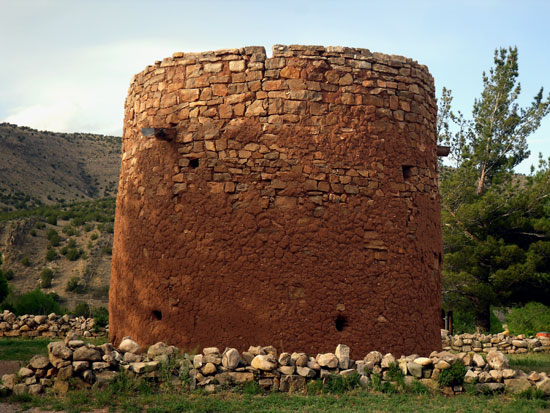 Thus, to challenge Murphy and Dolan was to challenge the territorial powers in Santa Fe as well. In 1876 a 24-year-old Englishman of means, John Tunstall, set out to get a piece of the action. Forming a partnership with a lawyer named Alexander McSween, and with the backing of John Chisum (think John Wayne) who ran over 100,000 head of cattle on his massive spread near Roswell, Tunstall and McSween built a competing store, set up a competing bank and started a cattle ranch on the Rio Feliz with an eye on those government cattle contracts. Feeling crushed under the Murphy-Dolan heel after all those oppressive years, many locals flocked to the new store and bank and sucked the financial wind out of Murphy and Dolan's sails, by some accounts pushing the greedy moneygrubbers toward bankruptcy.
Thus, to challenge Murphy and Dolan was to challenge the territorial powers in Santa Fe as well. In 1876 a 24-year-old Englishman of means, John Tunstall, set out to get a piece of the action. Forming a partnership with a lawyer named Alexander McSween, and with the backing of John Chisum (think John Wayne) who ran over 100,000 head of cattle on his massive spread near Roswell, Tunstall and McSween built a competing store, set up a competing bank and started a cattle ranch on the Rio Feliz with an eye on those government cattle contracts. Feeling crushed under the Murphy-Dolan heel after all those oppressive years, many locals flocked to the new store and bank and sucked the financial wind out of Murphy and Dolan's sails, by some accounts pushing the greedy moneygrubbers toward bankruptcy.
 In my version of the movie Murphy and Dolan would have nothing to do with the newcomers' antics since they stood to lose big. Taking swift illegal measures to stop the free-enterprising interlopers they went after McSween's assets on trumpt-up embezzlement, and other, charges. After all, they owned the courts, too, so with bogus papers in hand, their Sheriff Brady formed a posse that set out to seize some of McSween's property. Depending on one's sources, some of Englishman Tunstall's horses were "accidentally on purpose" seized as well even though not part of any legal action. Were they goading the Englishman into a gunfight he would certainly lose?
In my version of the movie Murphy and Dolan would have nothing to do with the newcomers' antics since they stood to lose big. Taking swift illegal measures to stop the free-enterprising interlopers they went after McSween's assets on trumpt-up embezzlement, and other, charges. After all, they owned the courts, too, so with bogus papers in hand, their Sheriff Brady formed a posse that set out to seize some of McSween's property. Depending on one's sources, some of Englishman Tunstall's horses were "accidentally on purpose" seized as well even though not part of any legal action. Were they goading the Englishman into a gunfight he would certainly lose?
 Pressure was mounting. Confusion reigned. One of Sheriff Brady's biggest blunders was forming a posse to retrieve those assets using known gang members, bugger-eatin' thugs and smelly gunslingers, lazy rustlers and nefarious miscreants with ornery dispositions and bad breath and itchy trigger-fingers. Some of this posse of ne'er-do-wells led by William Morton hunted down Tunstall who was driving nine horses along the Rio Feliz to Lincoln. When they caught up with the Englishman they executed him on the spot in cold blood, one in the chest, one in the back of the head for good measure. It was the spark that ignited the Lincoln County War.
Pressure was mounting. Confusion reigned. One of Sheriff Brady's biggest blunders was forming a posse to retrieve those assets using known gang members, bugger-eatin' thugs and smelly gunslingers, lazy rustlers and nefarious miscreants with ornery dispositions and bad breath and itchy trigger-fingers. Some of this posse of ne'er-do-wells led by William Morton hunted down Tunstall who was driving nine horses along the Rio Feliz to Lincoln. When they caught up with the Englishman they executed him on the spot in cold blood, one in the chest, one in the back of the head for good measure. It was the spark that ignited the Lincoln County War.
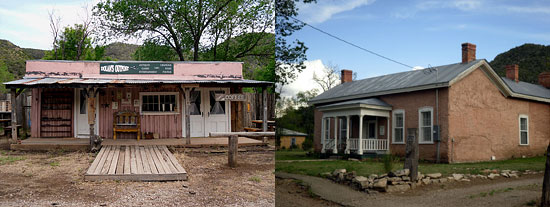
View Comments
John Treadwell Dunbar is a freelance writer